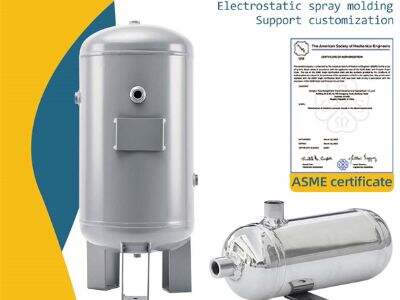The ASME buffer tanks are major components of the heating and cooling systems. They assist in regulating temperature and pressure, ensuring that your system operates efficiently. Corrosion is one issue that can occur with buffer tanks. Corrosion is when metal gets ruined by certain chemicals or things in the environment. This article will cover how ASME buffer tanks can avoid corrosion by selecting materials and coatings.
ASME Buffer Tanks And Different Types Of Corrosion
What Types of Corrosion may ASME Buffer Tanks be Exposed to? General corrosion, for instance, occurs uniformly over the metal surface, and is a common form of corrosion. Another variety is pitting corrosion, which creates small holes or pits in the surface. In tight spaces with limited amounts of oxygen, crevice corrosion occurs, resulting in damage of those areas. Understanding the types of corrosion allows you to select appropriate materials and coatings to mitigate it.
How to Select Materials that Avoid Corrosion
If you need ASME buffer tanks, choose metals that have a high resistance to rust. I do not know why this requires explaining, but stainless steel should be a common choice as it offers chromium, which creates a protective fan on the surface. Titanium is another great choice as it is extremely corrosion resistant and will also work in more demanding environments. And selecting the right materials ensuring your Buffer Tank stays strong and durable for years.
The Role of Coatings in Preventing Corrosion
Corrosion mitigation is also critical to consider, in addition to the selection of the proper materials on ASME buffer tanks, properly encapsulated coatings can prevent corrosion. Coatings provide a layer of protection between the metal and corrosive elements (i.e. water, salts, etc.) ensuring the tank does not corrode. Because they offer additional corrosion protection, epoxy coatings are commonly used. Now with the right coatings you can extend the lifespan of, and improve the performance of your air buffer tank.
Corrosion Prevention Measures for ASME Buffer Tanks
Here are some maintenance tips to help prevent corrosion in your ASME buffer tank. To catch problems early, routinely check the tank for corrosion — rust or little holes. And maintaining the proper water chemistry and pH levels can prevent corrosion. Regular flushing of the tank and cleaning out any debris will also help. These tips can help maintain your buffer tank and avoid costly repairs.
How to Prevent Corrosion in Buffer Tanks
Corrosion prevention in ASME buffer tanks is essential for ensuring the efficiency of your heating and cooling system. Having an understanding of the different types of corrosion, selecting the right materials, utilizing proper coatings and adhering to maintenance tips can help keep your buffer tank safe from corrosion. If you suspect corrosion in your tank, be sure to contact an expert. Conducted with appropriate treatment and usage, you can guarantee that your ASME buffer tank endures for a long time.




